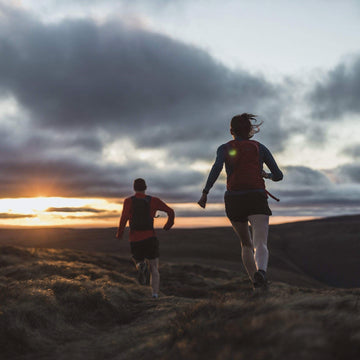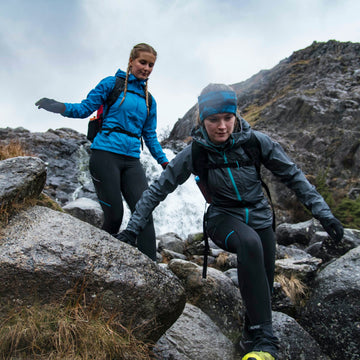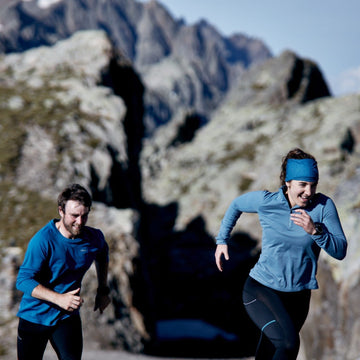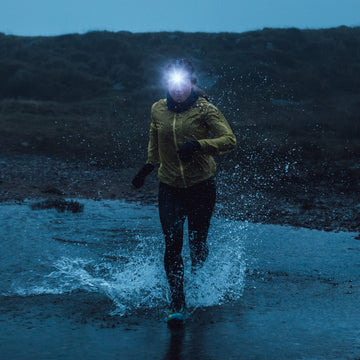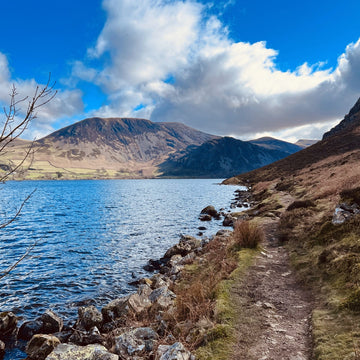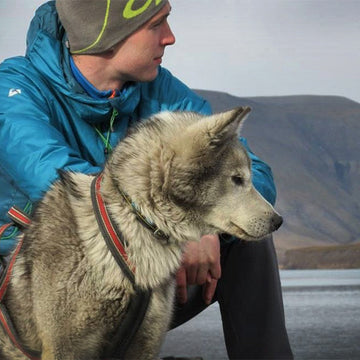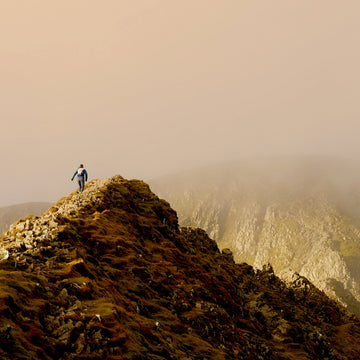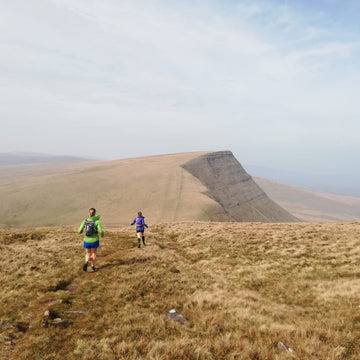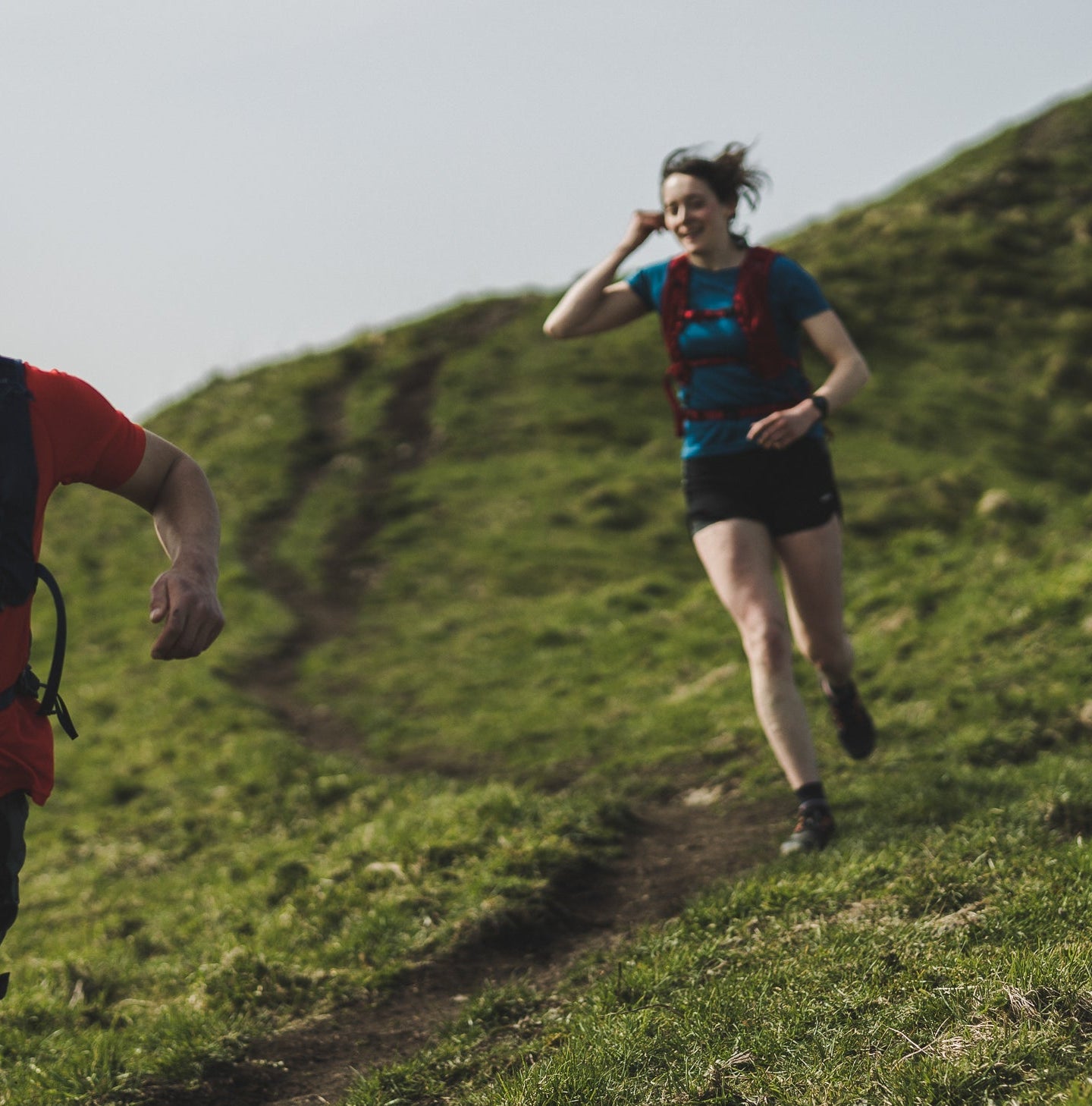
Discover the ultimate kit list for trail running, covering clothing, footwear, hydration, navigation, and safety gear for all conditions.
Don’t let the unknown hold you back. With our kit list, you’ll be trail-ready no matter the weather. Learn what essentials to pack for an off-road adventure.
Trail Running Kit List
- Clothing and Layering for trail running
- Running Packs
- Water and Nutrition
- Safety and Navigation
- Trail Running Shoes

What Should I Wear for Trail Running?
When trail running, it's important to wear clothing made from wicking, breathable, and fast-drying fabrics. This includes everything from your top to your underwear! These materials work with your body to regulate your temperature by managing sweat effectively.
If you’re like us, you probably check the weather multiple times and still hesitate before deciding what to wear. Layering with multiple lightweight pieces lets you easily adapt to changes in conditions and terrain.
For longer runs, remote locations, or harsh conditions, it’s a good idea to bring an extra layer, even if you don’t think you’ll need it. The Fell Running Association Minimum Race Kit recommends carrying a waterproof jacket with a hood and taped seams, along with a hat and gloves for safety. While this might not be necessary for a casual summer run through the woods, it can be critical in mountainous or exposed areas where the weather can shift rapidly.
Essentials
Moisture-wicking base layers (tops, shorts, tights, and underwear) pull sweat away from your skin to help it evaporate. This helps keep you cool when you’re overheating and prevents that cold, clammy feeling. Base layers are made from synthetic fibers, like polyester, or merino wool. Synthetic fabrics wick moisture faster and dry more quickly, while merino wool is naturally breathable and warmer when damp. Both can be worn year-round, though synthetics are often preferred in summer and merino in winter.
For Extra Warmth
A windproof jacket or gilet is incredibly lightweight, packs down small, and significantly reduces wind chill, making it a smart item to carry. Adding a thin hat, neck warmer, or gloves can provide surprising warmth when temperatures drop unexpectedly.
For Cooler Weather
In cold conditions, layering with a thicker base layer or a lightweight fleece jacket adds insulation while still allowing moisture and excess heat to escape.
Waterproofs
Because running generates a lot of sweat, dedicated running waterproofs offer higher breathability than regular waterproofs. They are also made with lighter, more flexible fabrics, making them easier to pack and move in.

Running in temperature extremes
Getting your clothing wrong on a long, remote trail run in the depths of winter isn’t really an option! We'll normally pack a insulated jacket (synthetic) as well as our waterproofs on very cold days. Merino socks are a game changer for cold toes!
In spring and summer it is an opportunity to layer for movement and regain the trail running freedom of lighter weight kit, a running cap will protect you from the heat and the harmful UV rays beating down. Wrap-around running sunglasses don’t bounce about as you move and Cat 3 lenses guard your eyes against UV.
How To Carry Your Gear When Trail Running
Running vest packs and waist belts offer better stability for running than walking packs. They’re designed to carry water, snacks and spare layers without bouncing or compromising your balance. You can find anything from minimalist race packs to multiday fastpacking packs these days. But around 5-10 litres should be big enough for a long trail run, even in winter.
Running Vests
Running vests are flatter than walking packs, sit higher up your back and conform to your body with a secure fit. They also include pockets on the shoulder straps so you can balance the weight more evenly across your body, and access water and snacks on the move. Many include hang loops and ports for hydration bladders too.
Waist Packs
Waist packs used to be much more common before race vests became widespread, but you still see gnarly old fell runners crossing the hills with them, bleached white after decades of running! Waist packs usually have a smaller capacity for shorter/warmer runs and give you better access to the main pocket without having to take your pack off.



How To Carry Water On A Run And What Food To Bring
For anything longer than an hour it’s a good idea to carry plenty of water and some food for energy. Anyone who’s ever ‘bonked’ midway through a run knows the importance of carrying more than you think you’ll need!
Water
Soft bottles and hydration bladders are the best way to carry water with you. These flexible water containers conform to your body without digging in and compress as you drink, stopping the water from sloshing with every stride.
Hydration Bladders offer a larger capacity and are easier to drink from on the move. But they do make it harder to see how much you’ve drunk and how much you’ve got left.
It's worth adding an electrolyte tab or sachet to your bottles for long/hot runs. These aid hydration by helping your body to absorb water more easily.
Nutrition
Energy gels are the quickest way to replace lost glycogen (the fuel your muscles use for energy). Their basic carbohydrates are absorbed rapidly, but they don’t always agree with your. errr. digestive system. They’re good for high intensity runs and races though! Snack bars, chews and jelly babies are a more belly-friendly alternative.
For slow and steady long runs you might prefer to take ‘real food’ which is easier on your stomach over the course of the day. You'll discover your own preferences with a bit of trial and error, but we find peanut butter and jam wraps go down a treat after a couple of hours of running! Take a mix of sweet and savoury snacks so you don’t get sick of one or the other.

What Safety Kit Do I Need For Trail Running?
For long runs in remote or mountainous areas you should always carry basic safety and navigation kit and know how to use it. Make sure you carry a:
- Map of the area (with map case if it’s not waterproof)
- Compass
- Safety whistle (if your pack doesn’t have one)
- Phone (fully charged – batteries can lose power in cold weather)
It’s a good idea to consider the following as well:
Head torch
Essential in winter when the light fades rapidly, a lightweight head torch is worth carrying year-round, if only to alert attention in an emergency. Make sure it’s fully charged or carry spare batteries.
First Aid Kit
You’d carry one on a day walk! You can get ready-made first aid kits for the outdoors but you might find you don’t need everything inside. Our bare minimum first aid kit includes: a re-usable crepe bandage (for sprains), paracetamol, dressings/plasters, blister plasters and tick tweezers.
Survival bag
We always take a survival bag on long runs in winter or in remote/mountainous areas. For an extra 100g, it’s worth the extra peace of mind (and the extra visibility in an emergency!).
Waterproof dry bags
Roll-top dry bags keep your electronics safe and your spare clothing dry for very little extra weight.
Toilet roll
When nature calls, it REALLY calls.

Smart packing means less faffing
Packing for long trail runs needn’t feel like prepping for a major expedition. It’s much easier to get out the house/tent/bunkhouse if your running vest is already packed with all your usual reserve layers and safety gear. Then it’s just a case of filling up your water and grabbing some snacks. You can vary what’s in your pack through the seasons to make sure you’re only carrying what’s necessary.

What Type Of Shoes Do I Need For Trail Running?
Specialist trail running shoes offer significantly more grip, structure and protection than road running shoes to meet the demands of off-road terrain. We'll not get into things like heel drop and shoe stiffness here, but the main things to think about are:
Grip - What surfaces are you running on? Long, well-spaced lugs (a bit like football boot studs) provide better grip for running on loose or muddy ground. Shallower tread patterns give you better grip on groomed, dry or hardpacked trails.
Cushioning - Shoes with more cushioning are generally more comfortable for long distances or running on hard surfaces (although barefoot runners may disagree!). Low-profile shoes are usually better for off-trail and fell running, giving you a better feel for uneven ground and reducing your chances of rolling an ankle.
Protection - Trail shoes usually have a toe cap (more things to stub them on off-road!) and include some form of underfoot protection so you don’t stab the soles of your feet on sharp rocks.
Support - Your shoes can shift around a lot on uneven ground. Extra midfoot support (running down from the lace holes in bands) holds your shoes in place.
Further Reading
We hope you have gained something from this introduction to trail running. Here are some more links to help you as you start to run more often, get out all-year-round and your trails start to take you further afield.
Happy (longer) trails!
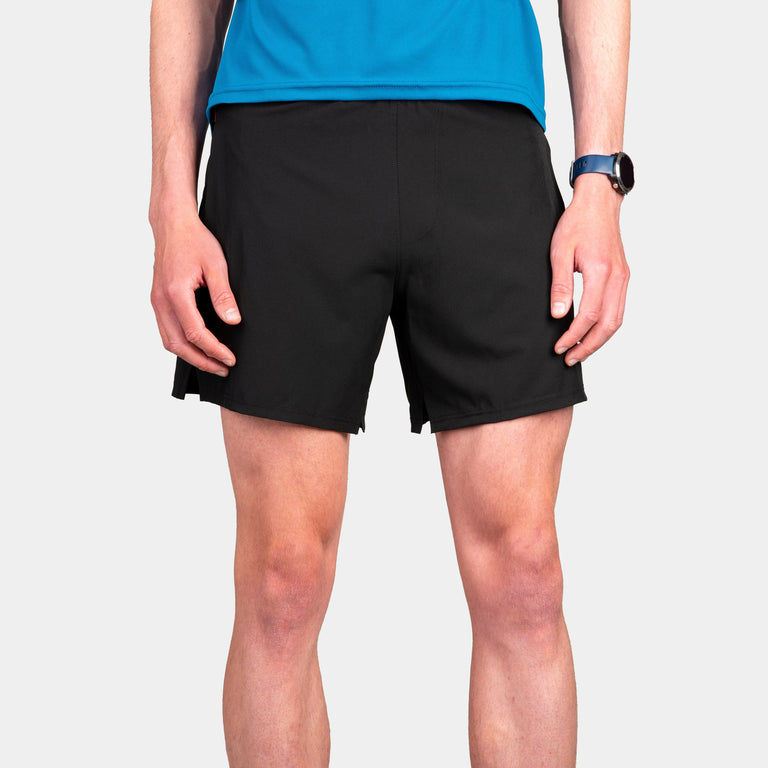
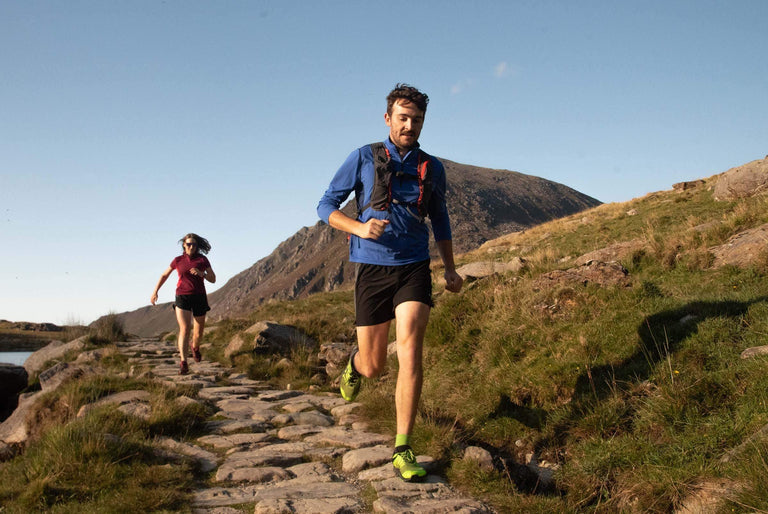
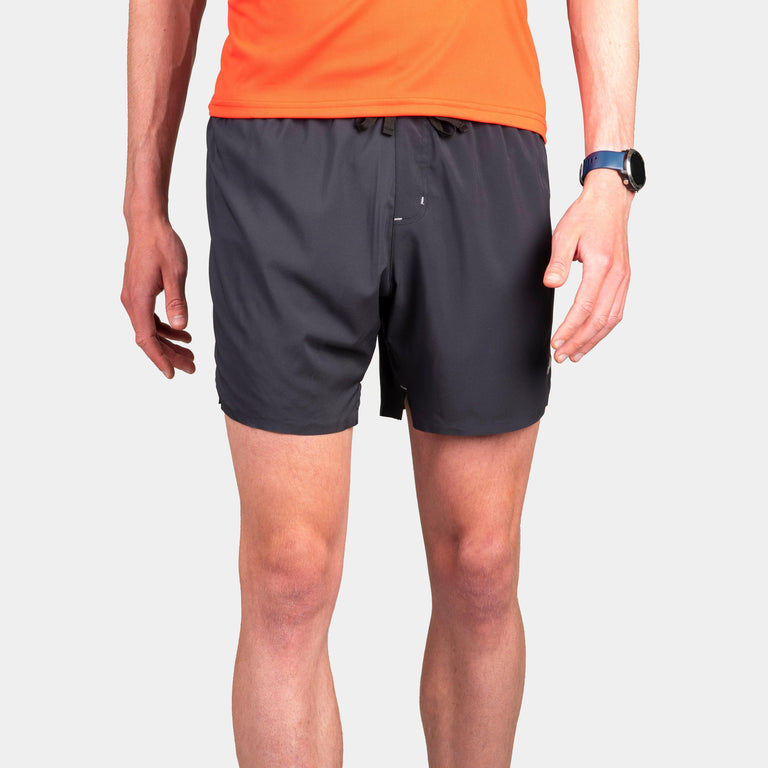
![Vayper Short 6 [Mens]](http://us.alpkit.com/cdn/shop/files/VAYPER_MENS_TENERIFE_005312__4000px_d0b4aa94-7d20-4bf1-9302-550ea38eb965.jpg?v=1717551622&width=768)
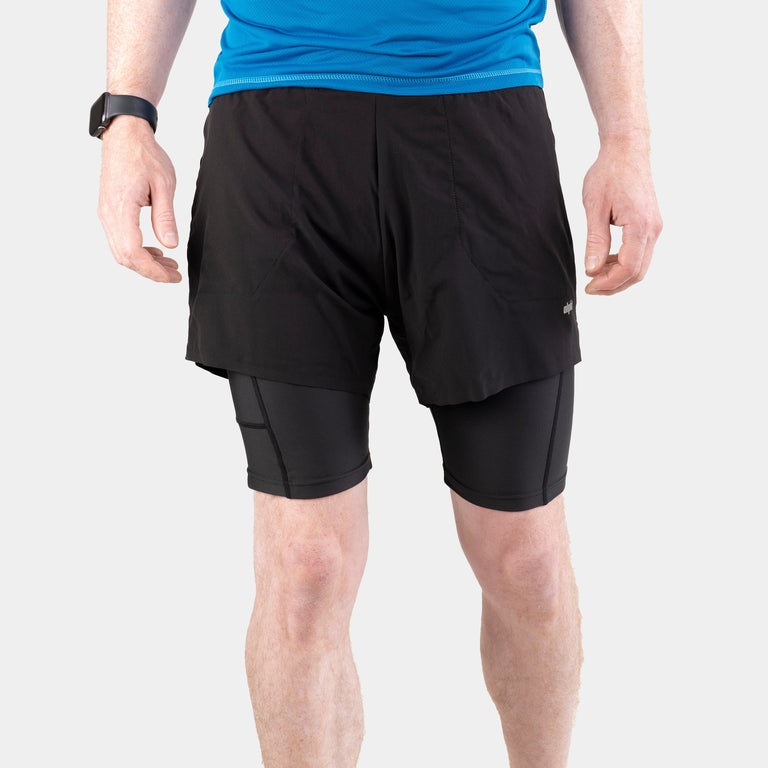
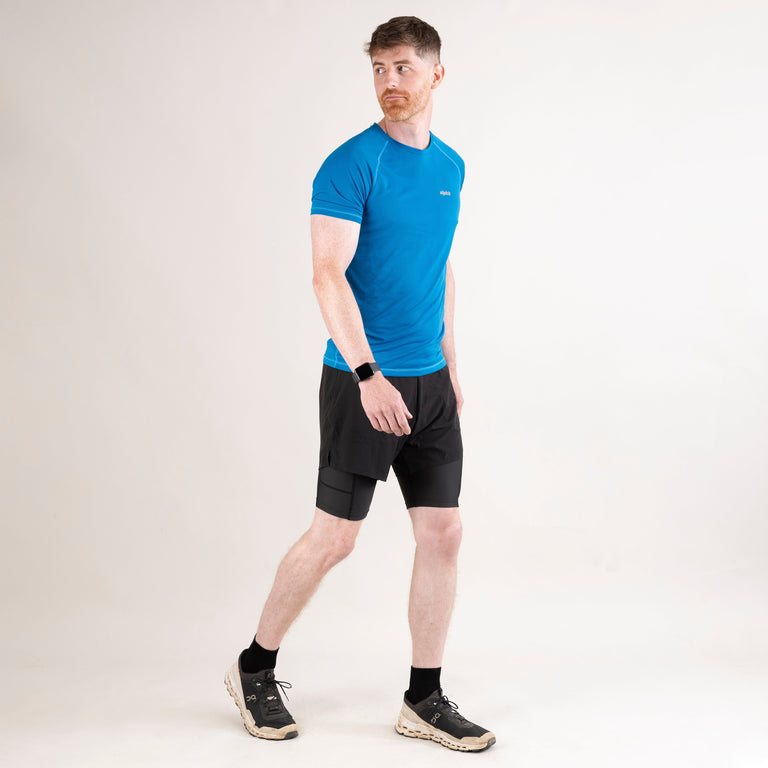
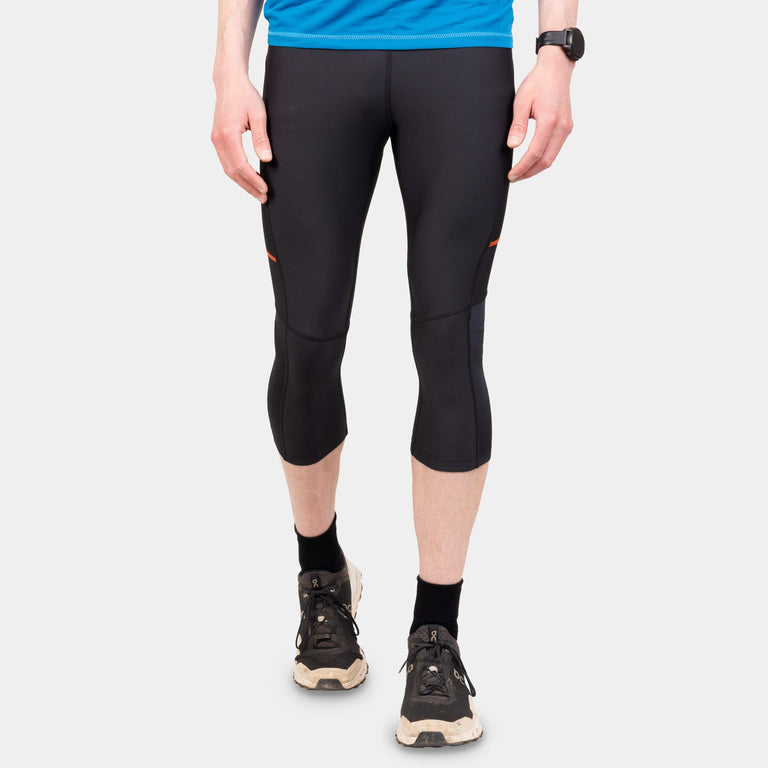
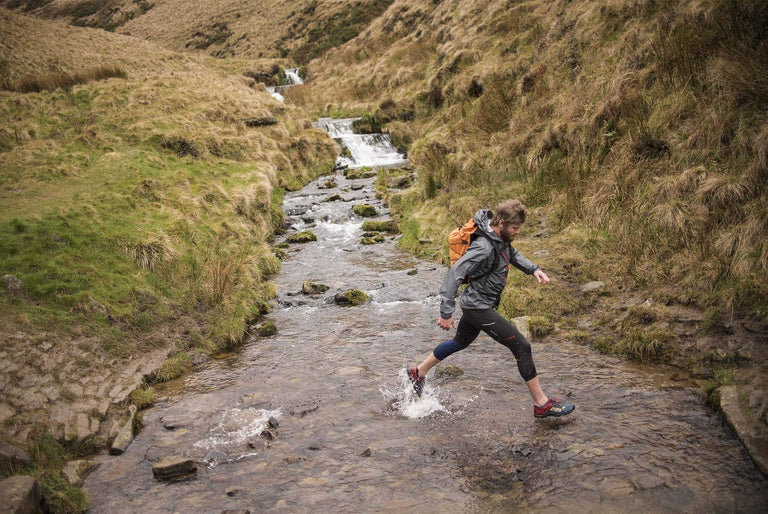
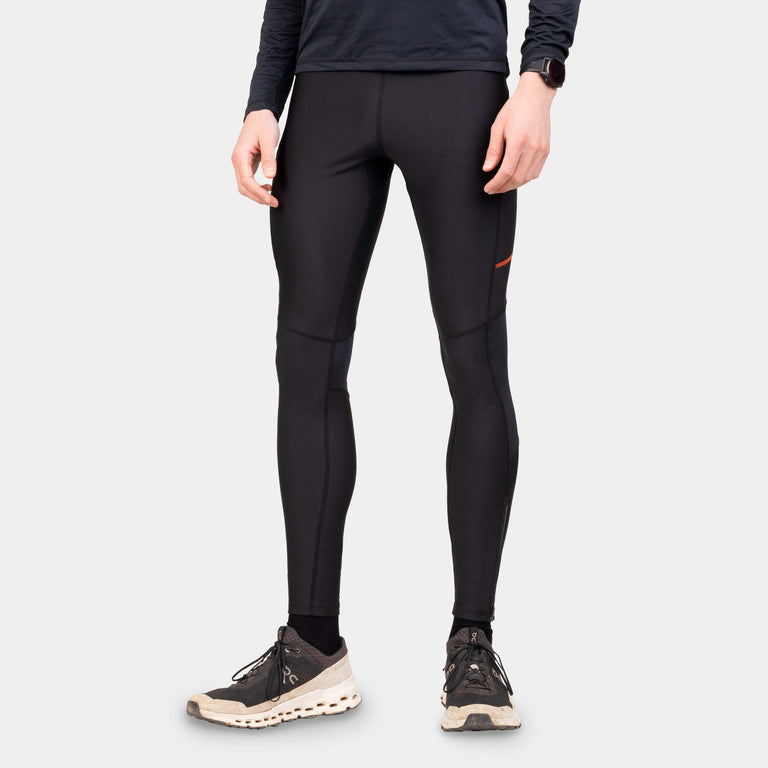
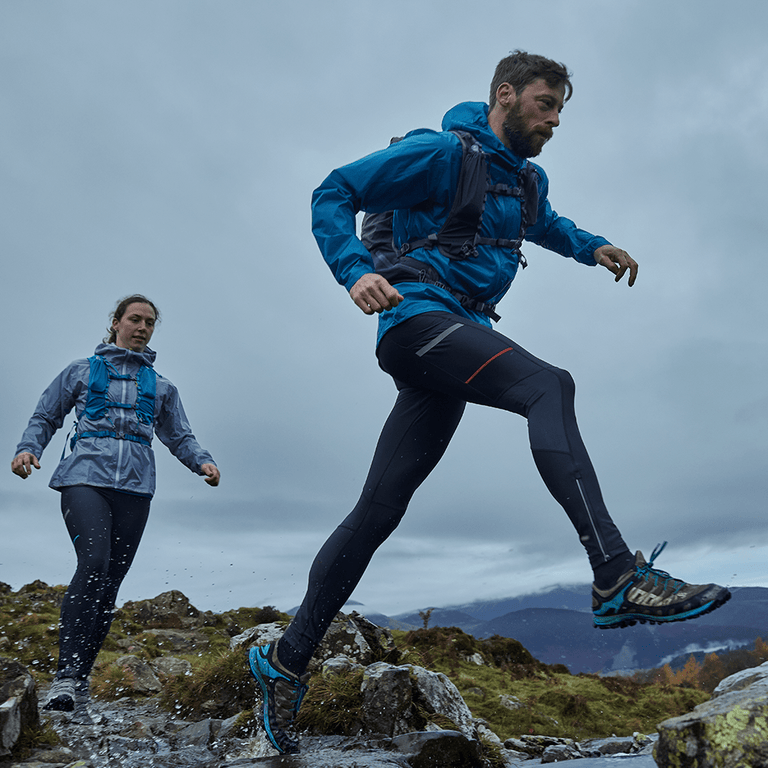
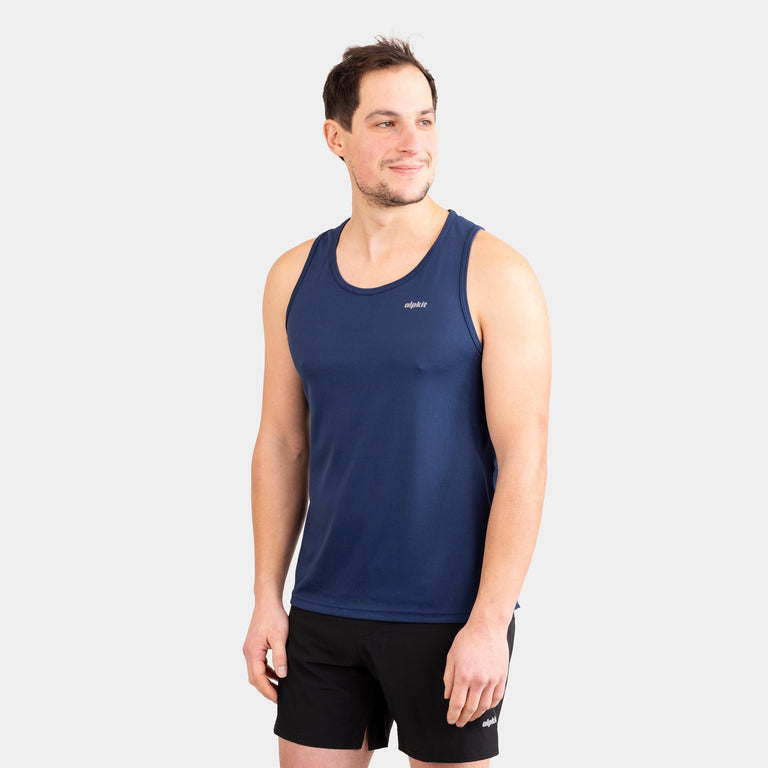
![Koulin Trail Vest [Mens]](http://us.alpkit.com/cdn/shop/files/koulin-trail-vest-m.png?v=1723940741&width=768)
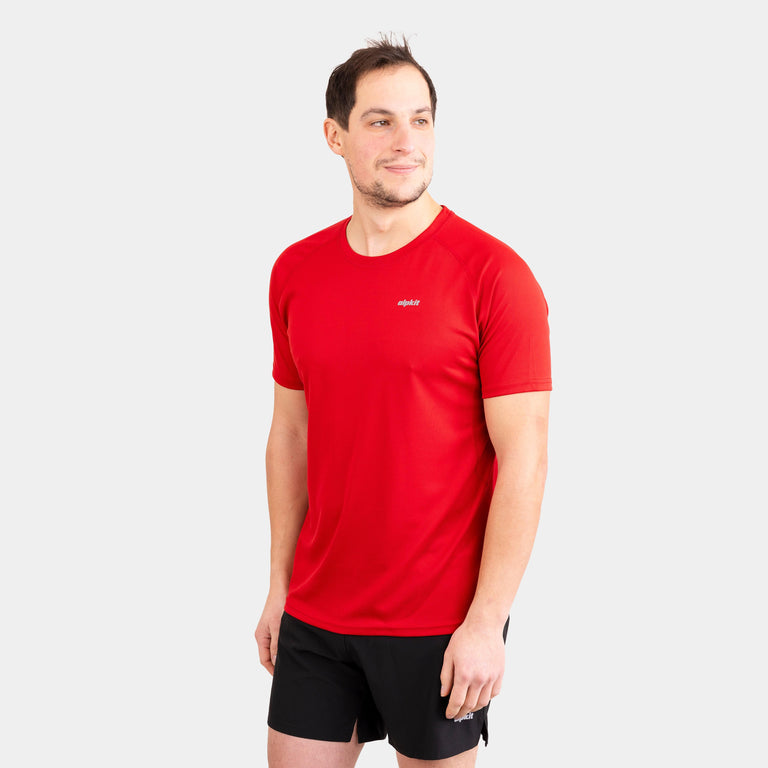
![Koulin Trail Tee [Mens]](http://us.alpkit.com/cdn/shop/files/koulin-trail-tee-m-1x1.png?v=1723940821&width=768)
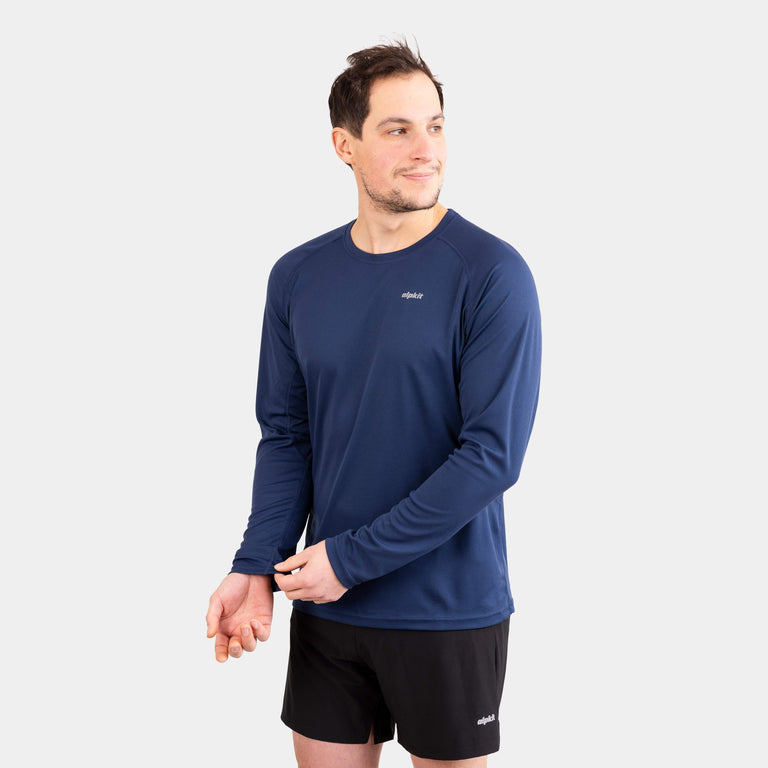
![Koulin Trail Long Sleeve [Mens]](http://us.alpkit.com/cdn/shop/files/KOULIN_LS_MENS_REEF_TENERIFE_005256__4000px.jpg?v=1717537185&width=768)
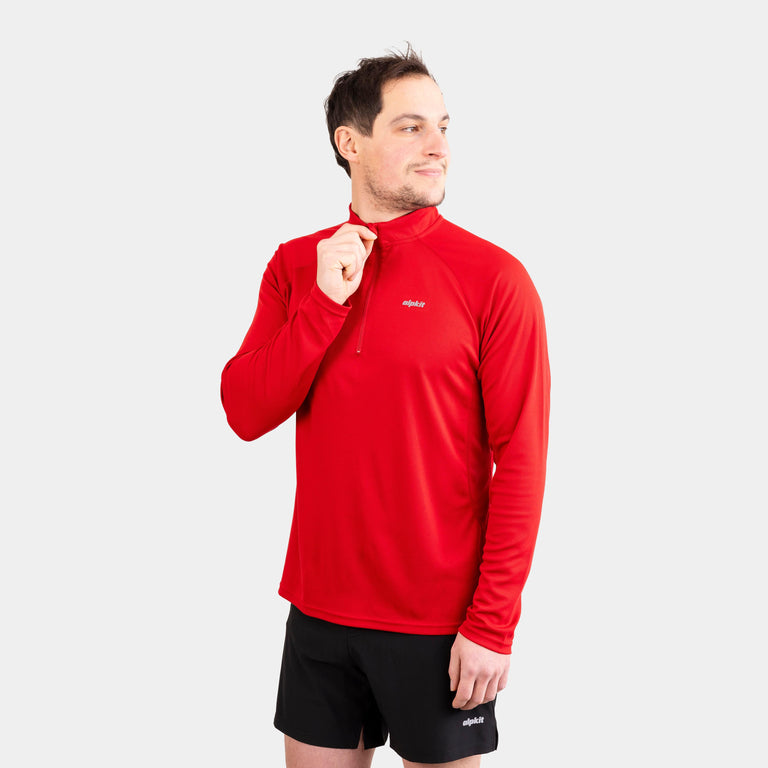
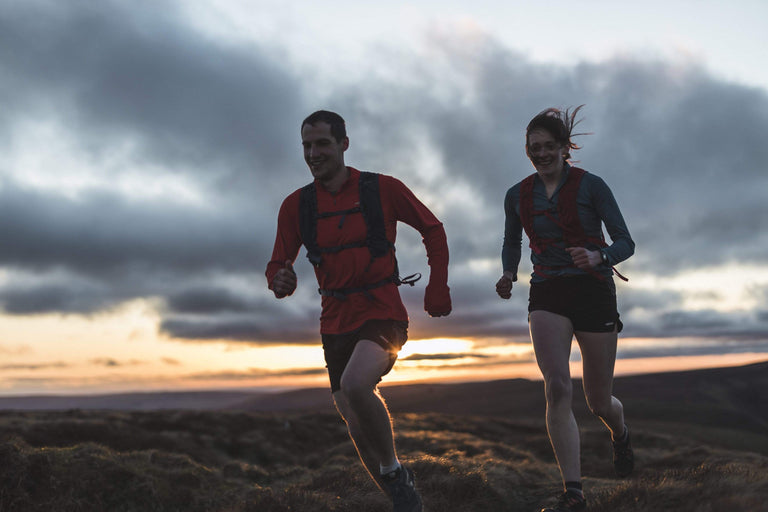
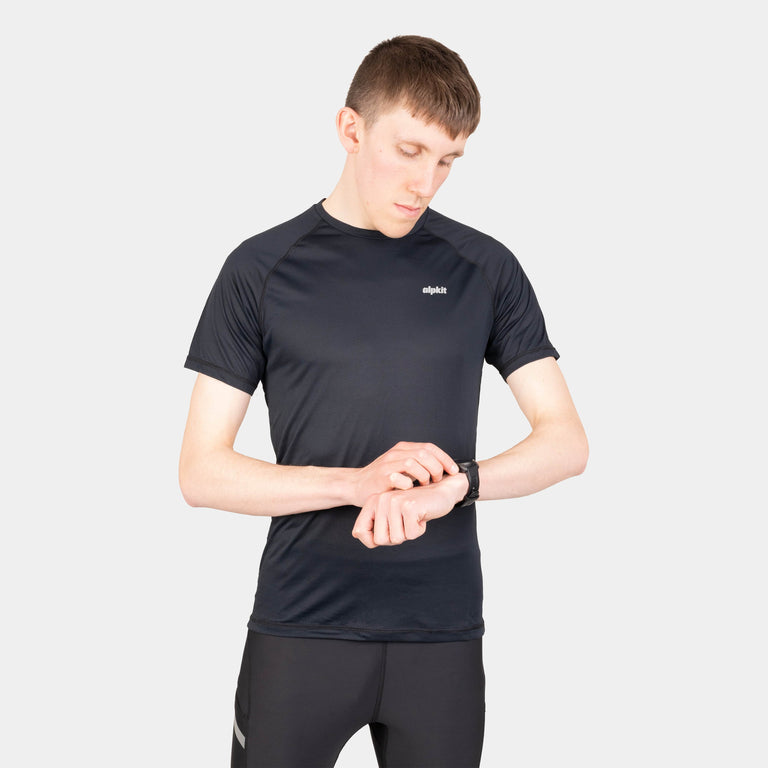
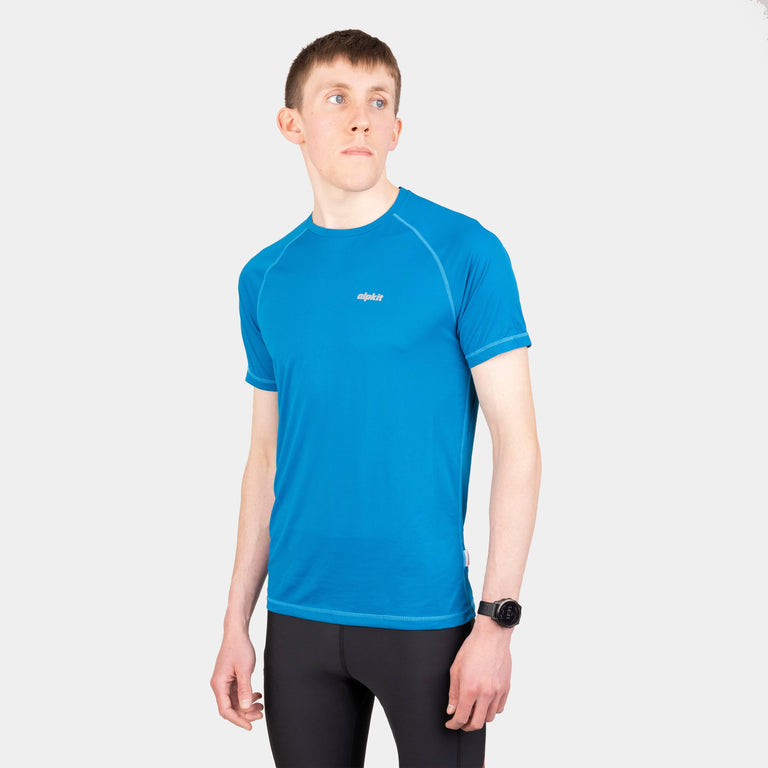

![Vayper Long Sleeve [Mens]](http://us.alpkit.com/cdn/shop/files/Alpkit_AW_25_Day_2_Sam_Walker-1_1.jpg?v=1767898823&width=768)
![Gravitas [Mens]](http://us.alpkit.com/cdn/shop/files/mens-gravitas-2025-chilli.jpg?v=1765566103&width=768)
![Gravitas [Mens]](http://us.alpkit.com/cdn/shop/files/gravitas-location-1-RETOUCH.jpg?v=1765566103&width=768)
